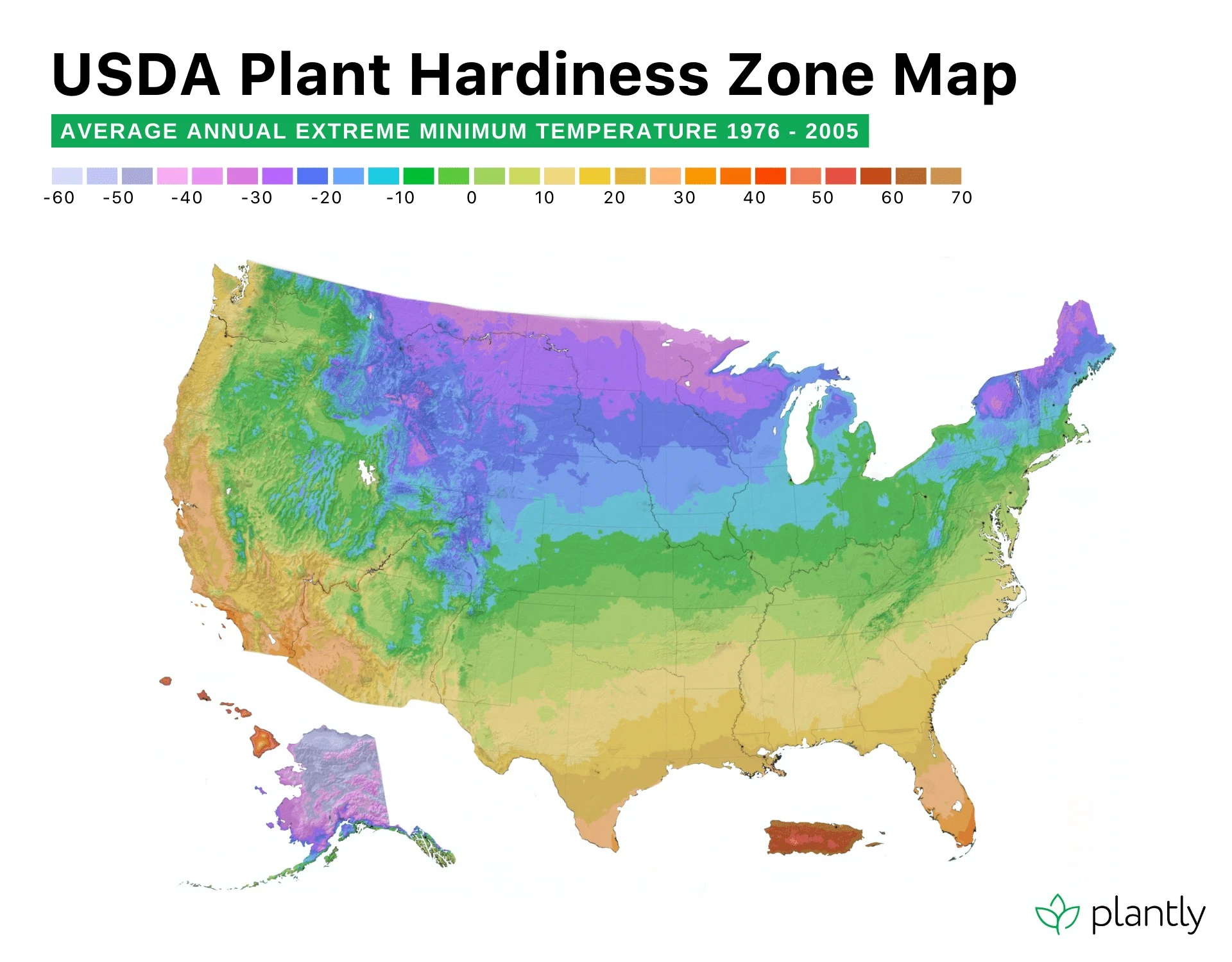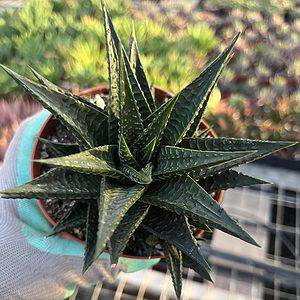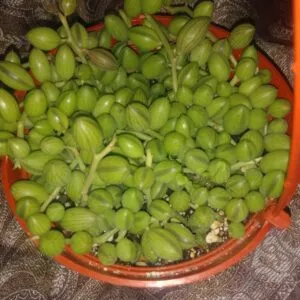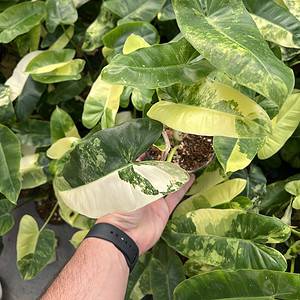No products in the cart.
Table of Contents
The Hoya Kerrii is a perfect gift and a great addition to any houseplant collection.
You must agree this little plant will look great in your home with its heart leaves. Yes, this is one of those unique, rare plants available in the tropical collection.
However, the best part you will love is the easy maintenance with this indoor plant. Are you interested in caring for the Sweetheart plant?
Stay longer to learn the Hoya kerrii care here with us.
BOTANICAL NAME: Hoya Kerri Craib
COMMON NAME: Sweetheart, Wax Plant, Valentine Hoya
PLANT TYPE: Heart-shaped leaves
GROWING SEASON: Summer
FLOWER: Star-shaped pattern flowers
MATURE SIZE: 6 to 12-inches tall
NATIVE AREAS: Southeast Asia
SUN EXPOSURE: Bright Indirect Light
SOIL TYPE: Well-draining Soil
SOIL pH: 6.0 to 7.5
TOXICITY: Non-Toxic to pets but will still keep them away from it
Where Does the Hoya Kerrii Come From?
The fascinating thing about the Sweetheart plant is the heart-shaped leaves, surely making for a crowd-pleaser. So many people, especially in Europe, gift a loved one around Valentine’s Day with this plant.
Thus, it is a popular plant to gift loved ones on Valentine’s Day and sold as a single leaf in a pot. With the heart-shaped leaves, you show your love to others.
The tropical plant comes from Southeast Asia and is known to vine up trees clinging with its aerial roots. So, if you want a climbing arrangement, this is a great indoor plant to invest in.
A standout with the sweetheart plant is the thick leaves, and with the right growing conditions, it will bloom in summer with round mounds of star-shaped flowers.
You can find the heart-shaped leaves in green or a creamy color with a white border and green center seen in the Hoya kerrii Variegated plant.
The tropical succulent also produces trailing woody vines that grow slowly.
TIPS: As mentioned, many garden centers sell the Hoya kerrii as a single leaf. While you can care for this adorable heart plant, an important thing to know is that it will never develop into a fully grown plant. The reason is that it is a rooted leave and not stem cuttings.
We recommend steering clear from investing in a single-leaf plant and instead investing in a plant with a rooted stem.
Hoya Kerrii Care

When caring for your Hoya kerrii, you can easily propagate with it to ensure you have many new plants to gift loved ones instead of only one leaf in a plant pot.
The Hoya care is to think of them as succulent plants. So, the Valentine Hoya needs plenty of sun with little water and, most importantly, well-draining soil.
Another helpful thing to remember is that it will put out long, bare vines for a short while when it is ready to grow new leaves or flowers.
Please do not cut these vines as they grow leaves and flowers.
Sweetheart Hoya Light
Your little plant loves bright yet indirect light, and the good news wait for it! You can also expose the Kerrii to some direct sun for a short while.
Again, we recommend placing it in your North-facing window. But choose an eastern, southern, or western exposure for fantastic light intensity for the best light intensity.
Now, gardeners do not expose your Hoya kerrii to too much sun as it can change the coloration of the leaves. So, how do you know your little plants are getting too much light?
The leaves turn a lighter green or will become yellowish. Another thing this plant can tolerate in your home is low light conditions, but it will not grow fast.
So, find a perfect spot in indirect light for your gorgeous Kerrii.
Temperature Requirement

Now, gardeners, when it comes to the temperature requirements for the heart-shaped plant, the best is to keep the room between 65° and 80° F. You should not have any concerns at these temperatures to keep your plant happy.
Yet, Hoyas do not enjoy cold drafts (brrr), ACs, or heating vents.
Humidity
Okay, this is the tricky bit, as you want to try and mimic the conditions of the plant’s natural environment. As the plant thrives in Southeast Asia, the humidity is high.
Never let the humidity go below 40%. So, what should you do if you find the humidity level below this percentage?
Don’t stress. You can easily solve it by misting your Hoya plant or placing it alongside your other outdoor plants.
Water Hoya Kerrii
ahead. Hoyas have thick leaves that are fleshy and succulent. So what does this mean? It means that the leaves store water and, therefore, only need minimal watering.
Another crucial thing before watering your plants is that the soil mix needs to dry out and prevent leaf and root rot from taking place. Okay, we are saying the Kerrii leaves store water, and the grounds must be dry. Great!
But how do we know? Get that finger out and get dirty by poking it in the soil about two inches. Take it out now if it is dry to the touch. Get out that watering can and give it some moisture. Yet, if your finger still feels moist, leave it be for a couple more days.
With our experience, we found Hoyas like to be watered every two to three weeks. Do not get us wrong; only rely on what we say. The best is to keep checking as the climate, season, and small pot can also play a significant role in watering.
The single-leaf Hoya leaves retain moisture during winter, while they may need more water during the growing season of spring and summer.
Potting Your Sweetheart Plant
Your plant is slow, so transplanting it often does not happen. Nevertheless, you can repot them once the roots start filling the pot. Placing it in a massive pot but choosing a slightly bigger one would be best.
We prefer using a clay or terracotta pot to allow more air and water to move freely. The best part is that these containers do not retain moisture that can lead to root rot. Also, provide your plant with a trellis for the vines to climb when they grow.
So now that we have this part out of the way, what soil should you use?
Potting Mix
Here, your biggest consideration is drainage. Remember, your Hoyas are very susceptible to getting rot. So, getting an orchid potting mix works best. Yet, you can use peat moss as it drains water fast.
If you like getting your hands dirty, why not make your potting mix for your Hoya kerrii? Doing this gives you more control to add aeration and keep it well-drained.
Okay, great, but how do we do this? Mix 50% of your regular soil with 25% orchid bark and 25% perlite. Great, but why?
The reason is that the perlite allows for excess water to drain easily. Furthermore, the aeration is enhanced, leaving the roots with moisture but not too wet for new growth.
If you can’t find perlite, use pumice or coconut coir.

Fertilizer Requirement
As you might have already received your Hoya in a small pot, it is still at an early stage of its life. But brace yourself, gardeners. Once the roots are established and grow, you notice it vines fast.
The good news is your Sweetheart Hoya is not a heavy feeder and can go without fertilizer. Yet, if you want to boost its growth, we recommend using a well-balanced water-soluble one.
Also, remember to dilute it before applying it to your plant to prevent it from burns. You can provide your Hoya with feeding twice to four times yearly.
But we recommend you stop in winter as your plant is semi-dormant.
Propagation Hoya Kerrii
So, gardeners, this is where the fun part begins. Do you want to gift a loved one with some greenery? You can if you’re going to share the love of your Valentine Hoya plant.
Here, you can find an easy way to propagate using a Ziploc technique that always works. Remember, you need a piece of stem with a node attached to ensure it sprouts new with continued growth.
Ziploc Method
Start by examining the potting mix. If you have a soilless potting mix, we recommend sterilizing it first. You can do this by pouring hot water over it and letting it drain well.
Add some of the soil to your Ziploc baggie about 1/3 of the way.
Place your stem cutting inside, covering the stem and leaf-cutting a third of the way with the ground.
Now, mist the inside of the bag and seal it up to create a humid environment to speed up the growth.
All that is left is for you to be patient, allowing the plant roots to become established. Then, if the soil is dry, you can open the baggie to add some water. Then, place the Ziploc bag in bright natural lighting or under a grow light. Another great way is using sphagnum moss. Okay, great, but how do you do this?
Sphagnum Moss Method
Start by pouring some hot water over the moss to sterilize it.
Please leave it to cool down and squeeze the excess water out.
Take the moss, wrap it gently around the node, and place it in a pot.
Make sure the bottom third of the cutting is in the soil.
Please mist it with water and wait for your Kerrii Hoya plant to root.
Using this propagation method is way better than only using a single leaf. Once you notice your cuttings developing a strong root system with new growth, you can transplant them into their pot.
Growth Zone

If you live in the USDA hardiness zones 11a to 11 b, you can easily grow the heart-shaped plant in your home.
Hoya Kerrii Varieties and Similar Plants
In the Valentine Hoya cultivar, you can find similar species as seen here:
Variegated Heart Leaf Hoya

Or the Hoya Kerrii Variegata, is a favorite for many houseplant collectors. It has the same shaped waxy heart leaves with a creamy/white border with a green center. While it is a slow grower, it is strong and can grow a vine wrapping itself around a trellis.
Still, the plant needs enough light to keep its variegated leaves or turn back to only green.
Hoya Kerrii Albomarginata
The White Margined Sweetheart Hoya, is an evergreen climber with attractive heart-shaped foliage that grows waxy, scented flowers. It needs warm, bright room temperatures to help produce the cluster of flowers in a star shape.
Furthermore, it also vines along with a post.
Hoya Carnosa
Carnosa is another popular house plant with deep green leaves producing a light pinkish or red star-shaped flower. Sometimes, you find them sold as wax plants or porcelain flowers.

Hoya Kerrii Diseases & Pests
One thing you will love is that your Sweetheart Hoya is carefree foliage. But as with most houseplants, it can also get its fair share of pests and diseases. Here are some common problems your Hoya can face:
- Over-watering is a big concern with this tropical plant. It causes the Hoya Kerrii leaves to discolor and wilt.
- Sap-sucking pest such as mealybugs, spider mites, scale insects, and aphids is a big concern. A homemade pesticide that works well is using 5ml Neem oil with a liter of water and liquid soap.
Frequently Asked Questions
When a Hoya kerrii is exposed to dry air, it may struggle to thrive and even experience some adverse effects. The leaves of the plant may start to dry out and become brittle, which can lead to them falling off the stem.
Additionally, the plant may be more susceptible to pests and diseases when exposed to arid air. It’s essential to keep the environment around your Hoya Kerrii plant humid and moist to ensure its health and longevity.
Some ways to do this include misting the plant regularly, placing a humidifier in the room, or grouping the plant with other moisture-loving plants.
Providing the right conditions is essential to get your Hoyas to bloom. Ensure they get enough light but not too much direct sunlight. Water them regularly, but don’t over-water them, as this can lead to root rot.
Also, consider using a fertilizer specifically designed for flowering plants to give them an extra boost. Finally, ensure they’re in a warm and humid environment, which can help trigger blooming. With some care and patience, your Hoyas should start blooming quickly!
The growth rate of Hoyas depends on various factors such as light, temperature, humidity, and soil conditions. Generally, a Hoya plant takes around 2-3 years to reach maturity and bloom. Nonetheless, with proper care and attention, you can help speed up growth and enjoy the beautiful flowers sooner. Remember to provide your plant with adequate light, water, and fertilizer, and keep it in a warm and humid environment. Happy growing!
Most Hoyas do not grow from a single leaf as they do not have a node that allows the roots to develop. But you can still care for a single leaf for years.
Curling leaves on Hoyas can be caused by several factors, including overwatering, underwatering, pests, or environmental stress. It’s essential to assess the plant’s overall health and environment to determine the root cause of the curling leaves and take appropriate action to remedy the issue.
While they are slow-growing, mature Hoya can grow up to 13 feet long.
Whether you want to buy, sell, or simply reach out to other plant enthusiasts, Plantly is the right place to be!
-
$9.99Sold By: Cacti and Exotica
$12.00In stock
haworthia limifolia
Rated 4.98 out of 5 based on 59 customer ratings00Sold By: Cacti and Exotica -
-
$28.00Sold By: Painted Petals and More
In stock (can be backordered)
Syngonium Albo variegated
Rated 4.78 out of 5 based on 64 customer ratings00Sold By: Painted Petals and More -






